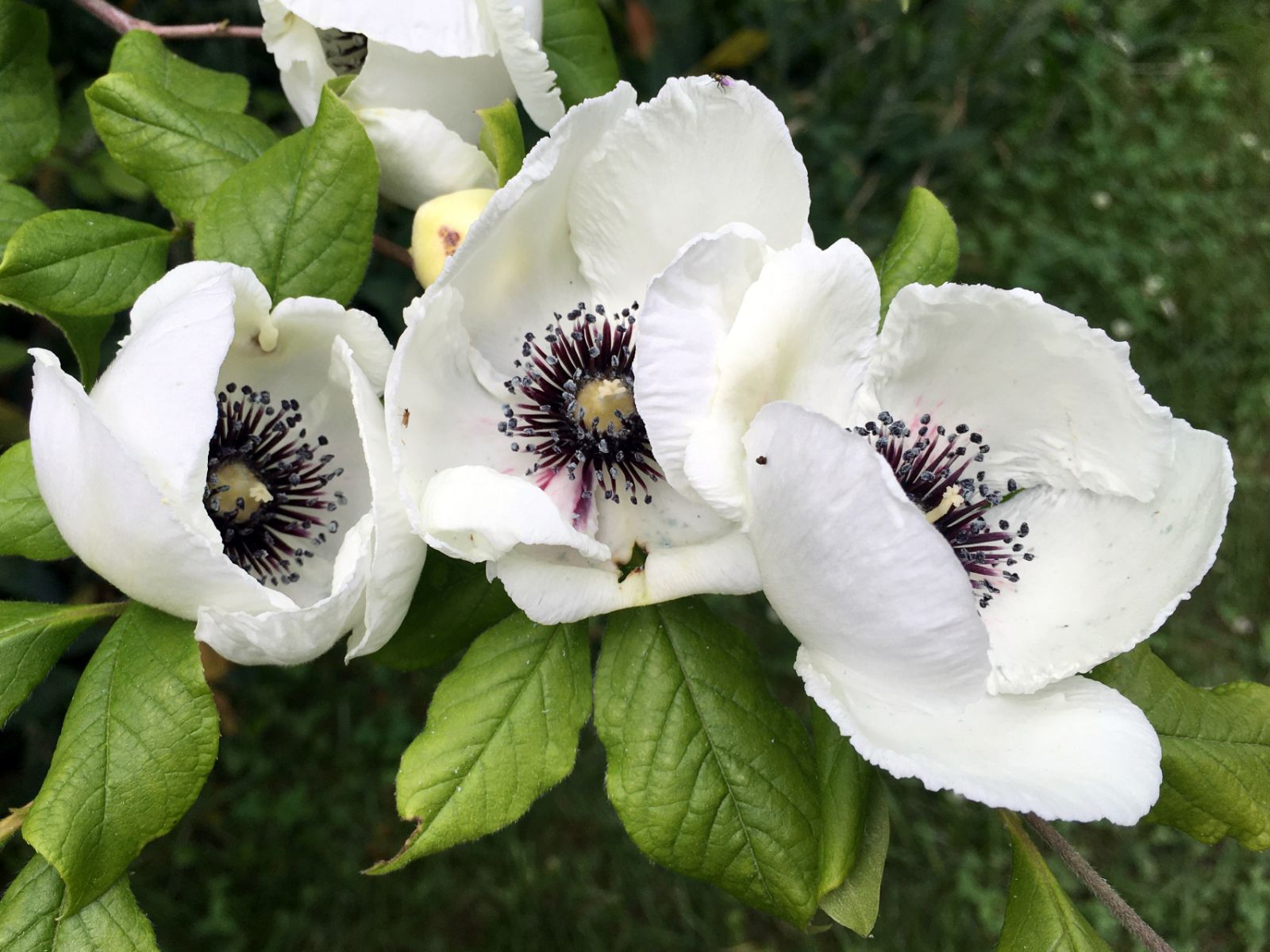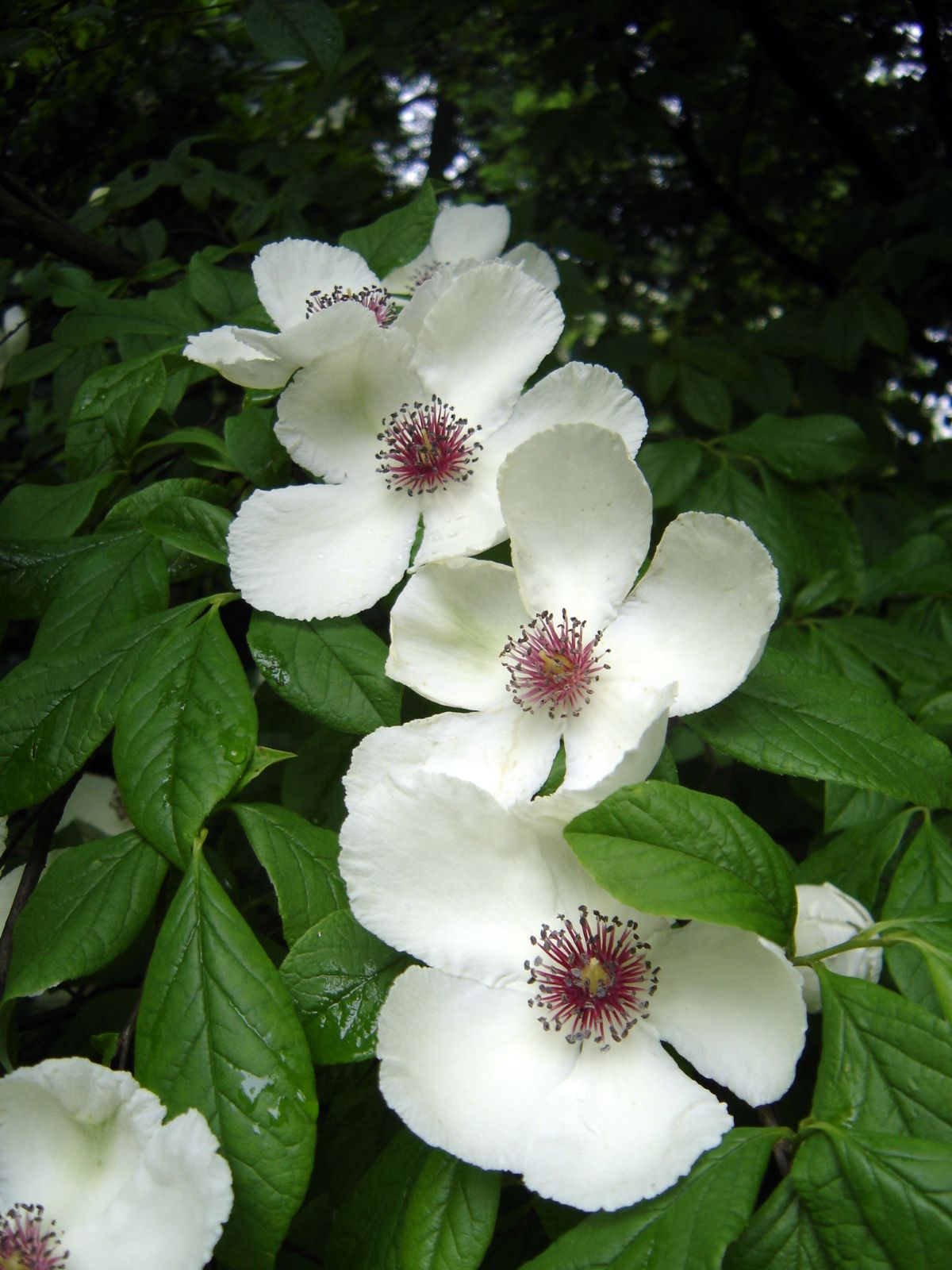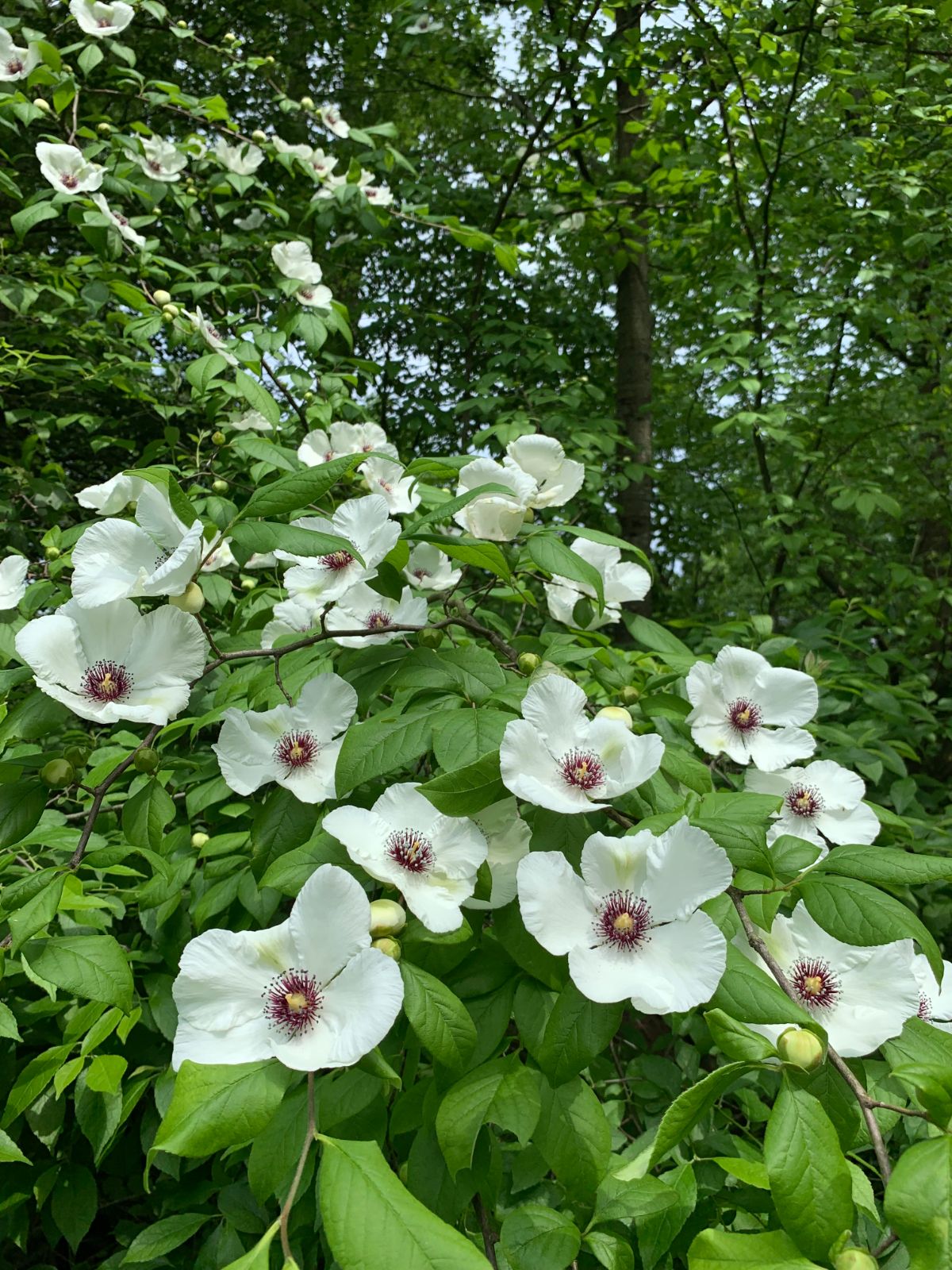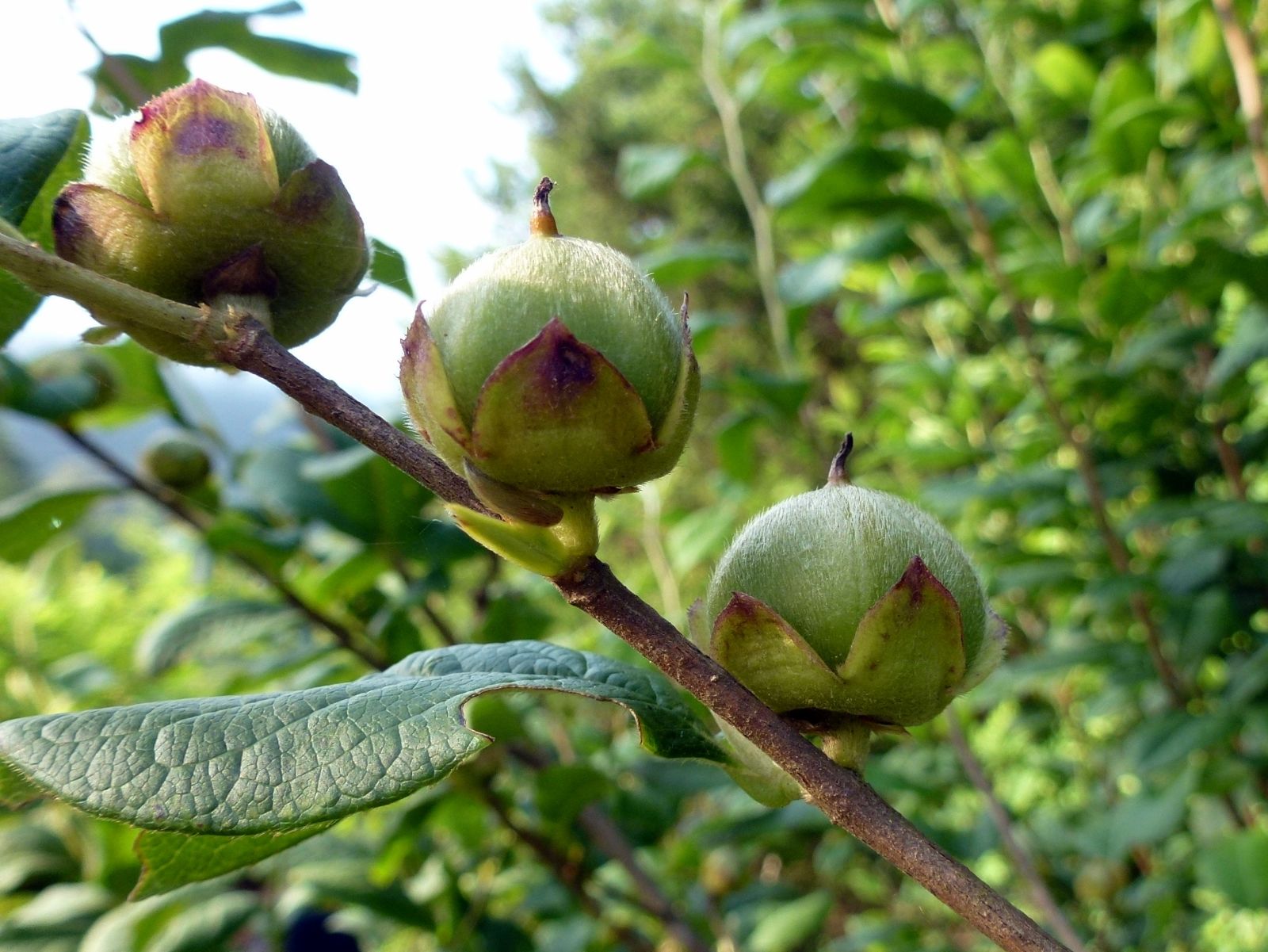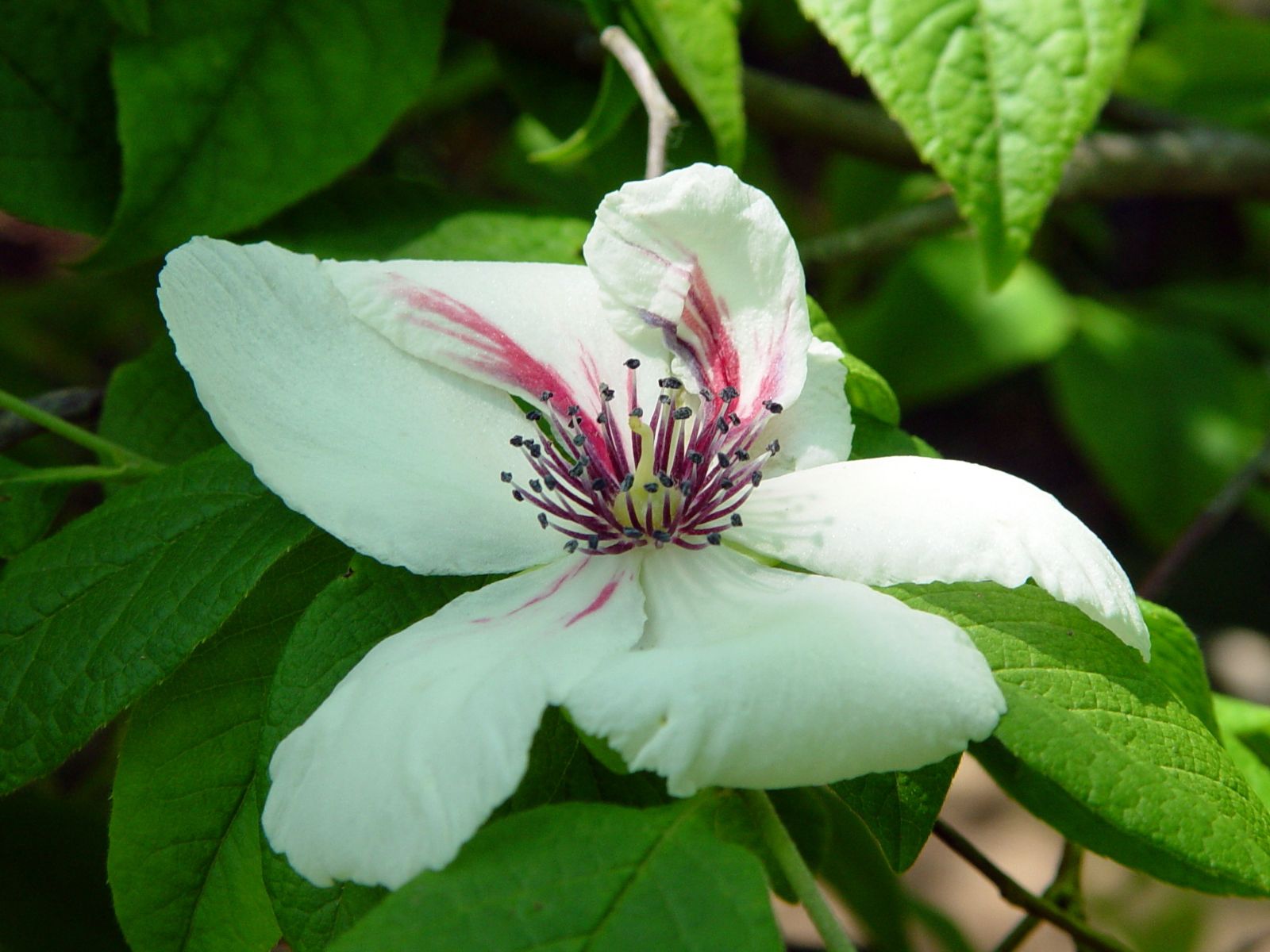Stewartia malacodendron
Sponsor
Kindly sponsored by a member of the International Dendrology Society.
Credits
John Grimshaw (2016)
Recommended citation
Grimshaw, J. (2016), 'Stewartia malacodendron' from the website Trees and Shrubs Online (treesandshrubsonline.
Genus
Common Names
- Silky Camellia
- Round-fruited Stewartia
- Virginia Stewartia
Synonyms
- Malachodendron monogynum Dumont de Courset
- Stewartia virginica Cavanilles
Deciduous tree or large shrub to 6 m, often multi-stemmed with a rounded crown. Bark smooth but flaking in longitudinal strips to look mottled, branches ascending smooth, twigs reddish-brown and pubescent when young, becoming greyish and glabrous. Winter bud scales 2, not enclosed by petiole wings, compressed, 5–9 mm, densely silvery-pubescent. Leaves (2.5–)7–12 × (1.1–)4–6 cm, elliptic to oblong-elliptic, pubescent below, 7–8 pairs of veins, margins serrulate, apex acute, base cuneate to attenuate; petiole 2–4(–5) mm, with a narrow wing 0.1–1 mm wide. Flowers solitary; pedicel 0.2–0.4(–0.5) cm × 1 mm; bracteoles 2, 2–4 mm; sepals rounded, 7–9 × 5–9 mm; corolla white, occasionally streaked purple, (5–)7–10(–12) cm across, lobes with crenulate to erose margins, silky-pubescent externally; stamens 50–100(–125), filaments 5–10 mm, purple, anthers bluish; style solitary, stigma 5-lobed. Capsules rounded, sometimes with conic apex, 1.2–1.6 × 1.2–1.8 cm, pubescent. Seeds brown, unwinged, lenticular to angular, 5–7 × 3.5–4.5 mm, shiny. Flowering (late Mar–)May–Jun(–Aug) (USA). (Prince 2009; Elias 1980).
Distribution United States Alabama, Arkansas, Florida, Georgia, Louisiana, Mississippi, North Carolina, South Carolina, Texas, Virginia
Habitat Shaded slopes and wooded riverine terraces, 0–100(–200) m asl.
USDA Hardiness Zone 7-9
RHS Hardiness Rating H5
Conservation status Least concern (LC)
Taxonomic note The two American species of Stewartia are both from the southeastern states, and although S. malacodendron occurs on the coastal plain and S. ovata in more upland areas there is a risk of confusion if found when not flowering, but the differences in bud scales, petiole wings and shiny or dull seeds will separate them. In flower a glance at the styles will suffice; the purple filaments of S. malacodendron should be characteristic, but occasionally purple filaments occur in S. ovata
Stewartia malacodendron is a spectacularly beautiful flowering tree, covering the tree with large flowers enganced by purple filaments. Although introduced to Britain by John Clayton in the first half of the 18th century, first flowering in 1742, it never became commonly grown in Britain and indeed remains a rare plant in British gardens, currently (2016) not listed by any nursery. This is undoubtedly a consequence of its need for summer heat, and Bean notes that all the best specimens had been in southeastern England. The current largest individual is a 6 m tree at the Hillier Gardens (Johnson 2011), and there are good specimens at RHS Wisley and Herkenrode. Hsu, Boland & Camelbeke (2008) note that it is sensitive to spring frosts and does not ripen its wood well in cool northern European summers, so advocate a sheltered warm site for it. Even in the southern United States it is challenging to grow successfully (Dirr 2009) and at the Arnold Arboretum it dies back in cold winters (Hsu, Boland & Camelbeke 2008).
'Beaver Creek'
Flowers 7.5–9 cm diameter, larger than average, filaments purple. A selection from Beaver Creek Nursery, Madison, Indiana; although said to be easy to propagate by Dirr (2009) it does not seem to be widely grown.
'Delmarva'
Flowers to 5 cm across, with each corolla lobe streaked with red in its lower half (Hsu, Boland & Camelbeke 2008). This extremely rare cultivar (one specimen at Polly Hill Arboretum) arose from seed collected on the Delmarva Peninsula in the 1960s, first flowering 27 years after sowing by Polly Hill (Hsu, Boland & Camelbeke 2008). It has defied attempts to propagate it vegetatively: it would seem wise to select for pigmented corollas from seedlings from this clone or its ancestors.


